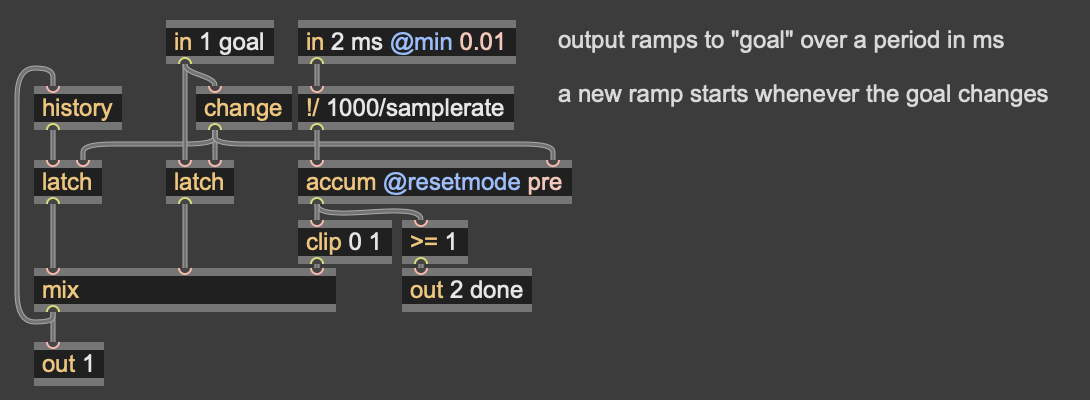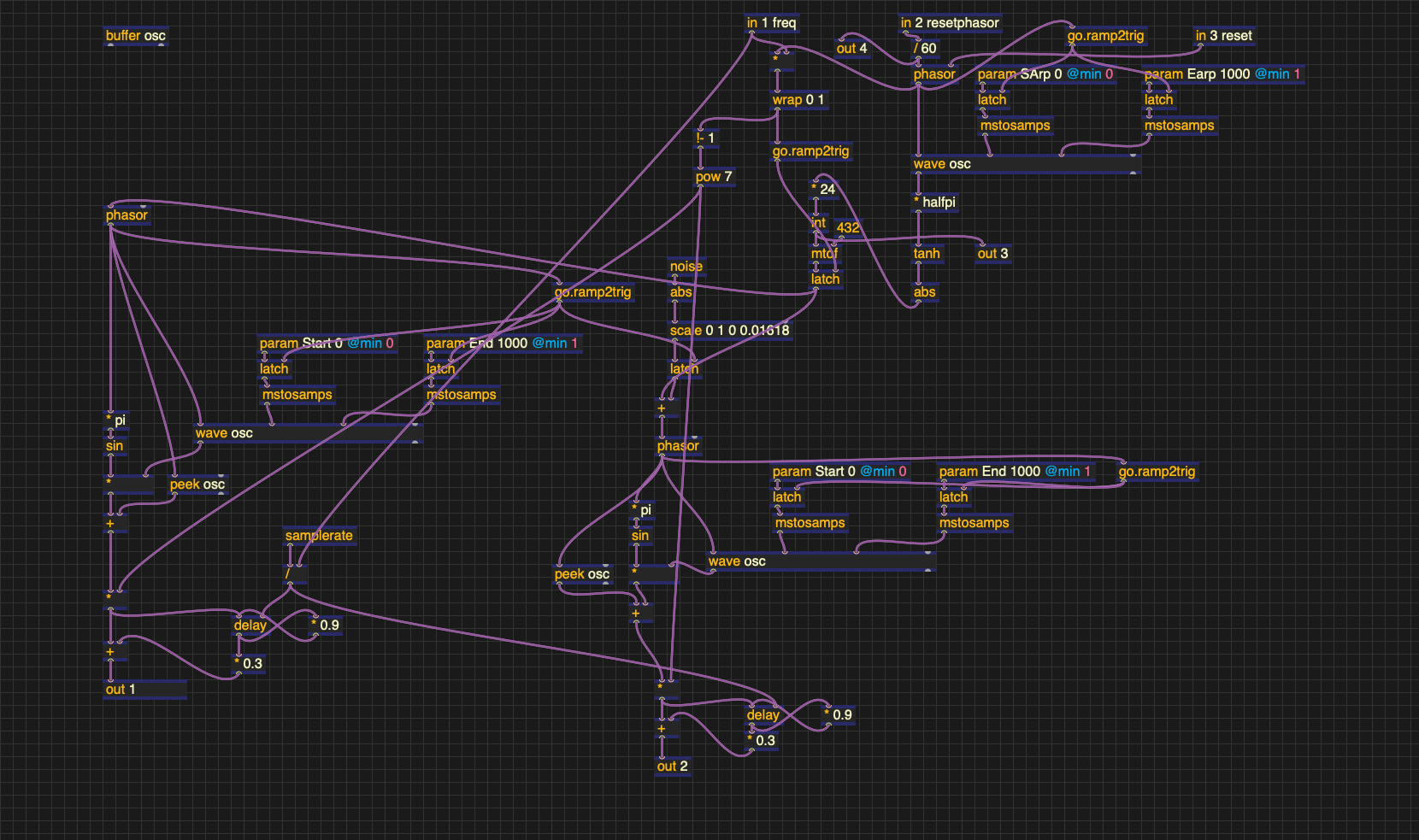[share] Autotimed 'Raised-Cosine' On/Off Signal-Switch (in gen~)
Hello, i made a thing which is at the heart of all my years of 'click-pop' removal explorations on these forums, and the understanding of which was most solidified when i coded the 1st version of the karma~ object for Rodrigo Constanzo.
It is a simple 'raised-cosine' ramp for the smoothest, yet catch-all fade-in/fade-out click-pop removal, i've ever found. Now i've rebuilt it in gen~... perhaps not the most efficient mechanism of its kind, feel free to iterate and post your version here, but it is working well for me for every single place i need it.
This is just a demonstration patch, utilizing it in weird ways not originally intended(using it this way demonstrates how the raised-cosine fade is related to lopass filtering, especially in sound), while still demonstrating the sample-rate reactivity and quickness of it, hope it can be useful, or at least entertaining:
thanks to share !
i made that at time, named cosdel with same idea to smooth ramps, but for delay, like doppler effect. Seems to have the same logic, but for values over 1. I dydn't test for short datas, to avoid clicks.
nb: contribution of many off the maxlist... -thanks all-, in times to make like line~ in gen~, not so easy..., , and the ease package.
have a nice day all :-)
mz
This is so good, Thank You @Mizu!
About the question "how to make a line~ in gen~", there's two ways I generally recommend.
This is "go.line.ms" from the Generating Sound & Organizing Time book, which, like line~, ramps to a target over a fixed duration in ms:

A very similar method is to use a slew limiter, which ramps with a maximum steepness, and when your target is always either 0 and 1 this is almost equivalent (the difference is in how it responds when you interrupt it mid-ramp). Here's "go.slewlimit.ms", which has the same interface:

Both of these can be adapted to the raised-cosine on/off switch by setting the line targets to 0 and 1, and passing the resulting line through a raised-cosine unit shaper. (E.g. `0.5*(1-cos(pi*in))`)
The "raised cosine" has a lot of interesting properties actually -- the wikipedia page has nice pictures, but the explanations only really help if you happen to know what "vestigial symmetry", "minimal intersymbol interference", "havercosines" and so on mean... https://en.wikipedia.org/wiki/Raised-cosine_filter. One of the odd ones is that windowing FM with a raised cosine can create an entirely asymmetric spectrum, with sidebands only above or only below the fundamental -- that's also in the GO book (FM chapter).
Thanks guys for all this useful information. This week I eliminated clicks with just the pi sin function. Which seems to work very well for reading random information in wave.

